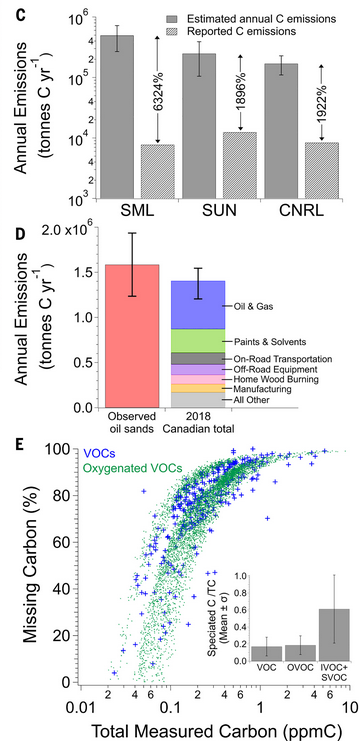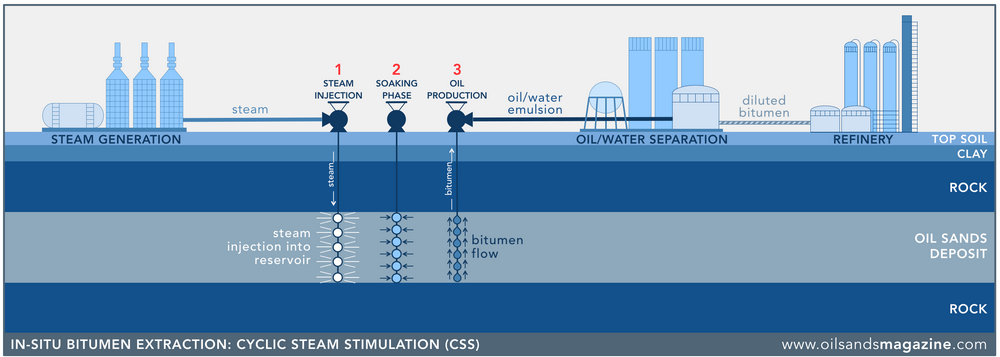February 6, 2024
Emissions
The oil sands are emitting more carbon than we realized. A lot more. A whole country's worth more.
A new study in Science shows that the output of the as of yet unmeasured and uncounted carbon from the oil sands in Alberta is equivalent to the entire human-caused emissions from the rest of Canada combined.

Reported values are under-counting (under-measuring) by 1900% to over 6300%.
The emissions are coming from volatile organic carbons released during the mining and bitumen extraction process.

This particular study is just looking at the oil sands, but a similar analysis could apply to any fracking in the USA/UK or similar type of forced extraction development. To date, we have not really done a full count these emissions because we have been focused on how much CO2 is released when we burn something.
These emissions are anthropogenic because they would have stayed in the ground if we had not dug them up.
The recent focus of governments after the recent COP has been on methane emissions along pipelines and at the source and the total emissions created by the oil and gas companies in their operations. But, these are production emissions such as emissions from burning natural gas to heat water or drive the contents along a pipe, or leaks into the atmosphere of already captured gas. These emissions did not capture emissions of the total production process.
This study is going to disrupt the field a little bit once the information gets out. It means that the numbers going into the global climate models trying to measure anthropogenic carbon are going to need updating. These new models are trying to measure total reduction of CO2, but they have likely not included the amount of emissions from this relatively new extraction process.
For background, Canada's oil sands mining has been going deeper and doing in situ extraction instead of mining of the oil sands. In situ extraction is done by forcing super-heated water underground and then extracting the oil under pressure as it separates from the soil. The process basically extracts everything including the oil. It is the everything else that is driving these emissions.
One might say that it also makes a complete mockery of the carbon capture and storage program of the federal government. You cannot capture these emissions.
However, there are different ways to extract this oil that does not leak so much CO2. The question is, are we going to force the companies to change their processes?
The study was funded by the National Science Foundation and the Ministry of Science and Technology of China with researchers from Yale, Environment and Climate Change Canada, Natural Resources Canada, and Peking University.
Here is the quote that puts it into perspective.
These hydrocarbon intensities translate to total facility-wide emissions that are equivalent to 0.3 to 12.1% of production by mass (table S2), which is comparable with the magnitude of loss rates of highly volatile methane from US oil and gas operations (0.3 to 8.9%).
So, oil sands are the same as fracking gas for atmospheric carbon-equivalent leaks. But, our facilities are massive, so the total amount is way more.
Looks can be deceiving.
This:
![]()
Is somehow way worse than this:
![]()